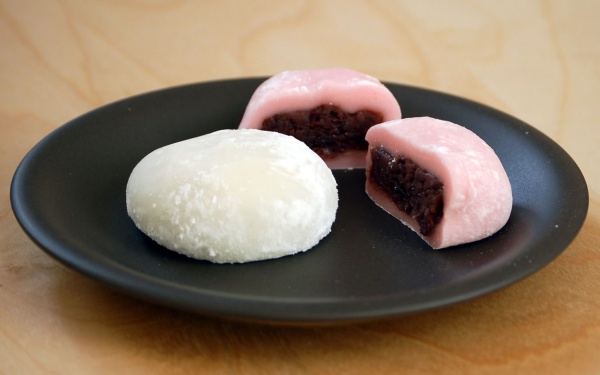Facts About Daifuku
Daifukumochi, commonly known as Daifuku, is a cherished Japanese confection comprising a small, round mochi (a chewy rice cake) filled with sweet fillings, most frequently anko, a sweet red bean paste. This delightful treat is a staple in Japanese confections, known as Wagashi, and is often enjoyed alongside a cup of green tea.
Daifuku comes in various flavors and colors, with the most popular being white, pale green, or pale pink mochi filled with anko. To prevent them from sticking together, they are typically dusted with rice flour or starch. While Daifuku is traditionally made using a method called mochitsuki, it can also be prepared more conveniently using a microwave.
The history of Daifuku dates back to the early Edo period, when it was originally called Uzumomochi. It later became known as Habutai mochi due to its filling. Eventually, the name changed to Daifuku mochi, which means "great luck mochi." By the late 18th century, Daifuku had become quite popular, often toasted and given as gifts during special ceremonies.
There are many types of Daifuku, each offering a unique twist on the classic recipe. Some popular variations include:
- Yomogi Daifuku: Made with mochi flavored with mugwort.
- Mame Daifuku: Contains whole azuki beans.
- Shio Daifuku: Features unsweetened anko for a slightly salty taste.
- Awa Daifuku: Made with foxtail millet.
- Ichigo Daifuku: Filled with a whole strawberry.
- Ume Daifuku: Contains Japanese apricot.
- Coffee Daifuku: Has a coffee-flavored filling.
- Mont Blanc Daifuku: Filled with sweetened chestnuts.
- Purin Daifuku: Contains crème caramel filling.
Each type of Daifuku brings its own distinctive flavor and texture, making this traditional Japanese sweet a versatile and delightful treat.
